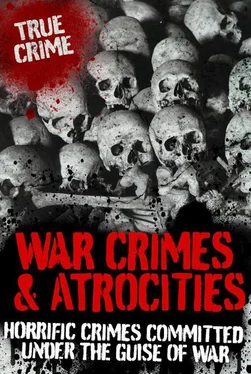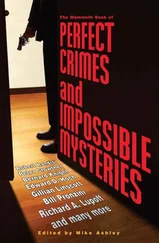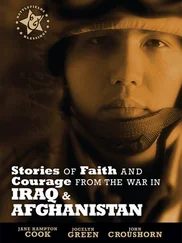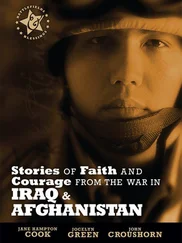By the end of the third day, there were bodies everywhere and it was a nauseating scene. Many of the victims had been mutilated by axes or knives; others had their heads smashed, their eyes removed, their throats cut, and the skin had literally been stripped from their body. Severed limbs lay strewn around the floor and others had been disembowelled. It was one of the most indecent acts of genocide that the world had ever witnessed.
NEWS SPREADS
News of the massacre started to spread quickly after a number of women and children had successfully escaped to the Gaza Hospital in the Shatila camp. They told the doctors there exactly what was happening, and before long foreign media had got hold of the news. Journalists who went into the camps after the massacre were nauseated by what they saw. Loren Jenkins of the Washington Post described the scene:
The scene at the Shatila camp when foreign observers entered Saturday morning was like a nightmare. Women wailed over the deaths of loved ones, bodies began to swell under the hot sun, and the streets were littered with thousands of spent cartridges. Houses had been dynamited and bulldozed into rubble, many with the inhabitants still inside. Groups of bodies lay before bullet-pocked walls where they appeared to have been executed. Others were strewn in alleys and streets, apparently shot as they tried to escape. Each little dirt alley through the deserted buildings, where Palestinians have lived since fleeting Palestine when Israel was created in 1948, told its own horror story.
The exact number of victims may never be fully ascertained. At the time the international Red Cross counted 1,500 bodies, but by 22 September, this number had risen to 2,400. The following day a further 350 bodies were uncovered, but because the Lebanese authorities forbade the opening of mass graves, the true number will probably never be known. Realistically, the number of victims is somewhere around 3,000 to 3,500, one quarter of whom were Lebanese, while the remainder were Palestinians.
The Israeli public were sickened when they discovered what had taken place, and on 25 September a huge demonstration of 300,000 Israelis was held in Tel Aviv, demanding the resignation of Prime Minister Menahem Begin and Ariel Sharon. They also demanded the establishment of a judicial commission of inquiry to investigate the circumstances of the massacre.
Even though Sharon insisted that he could not have known that the Phalangists were going to commit the atrocities in the Sabra and Shatila camps, he was still forced to resign his post as Defence Minister. Sharon’s reputation worldwide deteriorated to such a degree that it nearly ended his political career.
The Phalangist leader, Elie Hobeika, who was held directly responsible for carrying out the massacres, was under investigation for several years before his sudden death in 1985. Apart from his involvement in the massacres, Hobeika was also linked to several other crimes, including the 1978 assassination of Zghorta MP, Tony Franjieh, and a 1985 car bomb attack that severely injured Sidon MP, Mustafa Saad and killed his daughter, Natasha. It is believed that the Syrians discovered Hobeika’s involvement with the CIA and arranged for his death in a part of Beirut that was heavily patrolled by Lebanese security forces. He was killed in a bomb blast on 24 January, 2002, just one day after he said he was ready to testify in a case brought by Palestinians in Belgium accusing Ariel Sharon of sanctioning the Sabra and Shatila massacres.
The secrets of the Palestinian camp atrocities have probably gone to the grave with the death of Hobeika. A Belgian court has now postponed a decision over whether to indict Ariel Sharon for his role, while lawyers for the survivors try to gather more evidence. However, as two more Phalangist militia have been mysteriously murdered since the death of Hobeika, there is major concern that the true events may never be uncovered as the death list continues to grow.
1995

The Srebrenica massacre has become the symbol of Serbian evil and has been described as ‘a horror without parallel’. It was a cold-blooded execution of over 8,000 Muslim men and boys, while the international community and UN peacekeepers simply looked on. The massacre took place between 10 and 19 July, 1995, in and around the Bosnian town of Srebrenica, when Serb forces segregated civilian men from the women and killed them en masse .
BACKGROUND
The events that took place at Srebrenica mark the climax of a civil war in Bosnia–Herzegovina, a country that lies on the Balkan peninsula of southern Europe. It has an estimated population of around four million people and is the homeland to three ethnic groups – Bosnians, Serbs and Croats. The conflict began in 1992 and has been described as one of the most violent and genocidal periods in the history of the war. Atrocities were committed by all sides and against all sectors of the population, but the Serb strategy of gender-selective mass executions of non-combatant men, was the most severe and systematic atrocity of all.
One of the largest massacres during the early part of the war took place at a gymnasium in the village of Bratunac in April 1992. An estimated 350 Bosnian Muslim men were literally tortured to death by the Serb paramilitaries and special police. Bratunac was not far from Srebrenica, but although they were able to capture Bratunac, the city of Srebrenica was heavily defended by Naser Oric. Oric was a former Bosnian military officer who commanded the army of the Republic of Bosnia forces in Srebrenica with the help of associated squads of civilian torbari (or ‘bag people’). He has been described as a ‘Rambo-like’ figure with a reputation for carrying out atrocities on Serb villagers.
In April 1993, the Serb forces managed to close in on Oric and succeeded in overcoming his army, taking control of Srebrenica. The leader of the Serb forces, General Ratko Mladic, had already made it quite clear that he disliked the menfolk of Srebrenica, whether they were involved in the war or not, and in horrific scenes that soon captured the world’s attention, he started to segregate the inhabitants of the village. Literally hundreds of women and children were evacuated from Srebrenica before he finally tightened the noose and stemmed the flow of any further refugees.
Worried about what was happening in the village, the international community declared Srebrenica to be one of five ‘safe areas’, the other four being Zepa, Gorazde, Tuzla and Sarajevo. However the term ‘safe area’ was never really defined, and sufficient forces were never supplied to ensure the occupants safety. As the events at Srebrenica two years later proved, they were probably among the most ‘unsafe’ places in the entire world.
THE MASSACRE
Srebrenica was the home to tens of thousands of civilians who had taken refuge there from earlier Serb offensives in the north-east of Bosnia. They had been placed under the protection of about 600 lightly armed Dutch infantry troops when it had been designated a United Nations ‘safe area’. Supplies in the village were running low as nothing had been brought into the enclave since early May.
In July 1995, Serb forces, in an effort to ethnically cleanse the area of the Muslims living in the enclaves, tightened their noose further on the so-called ‘safe areas’. Serb forces started shelling Srebrenica, and Muslim fighters in the village asked for the return of their weapons that had been surrendered to peacekeepers. Their request was denied.
Читать дальше













